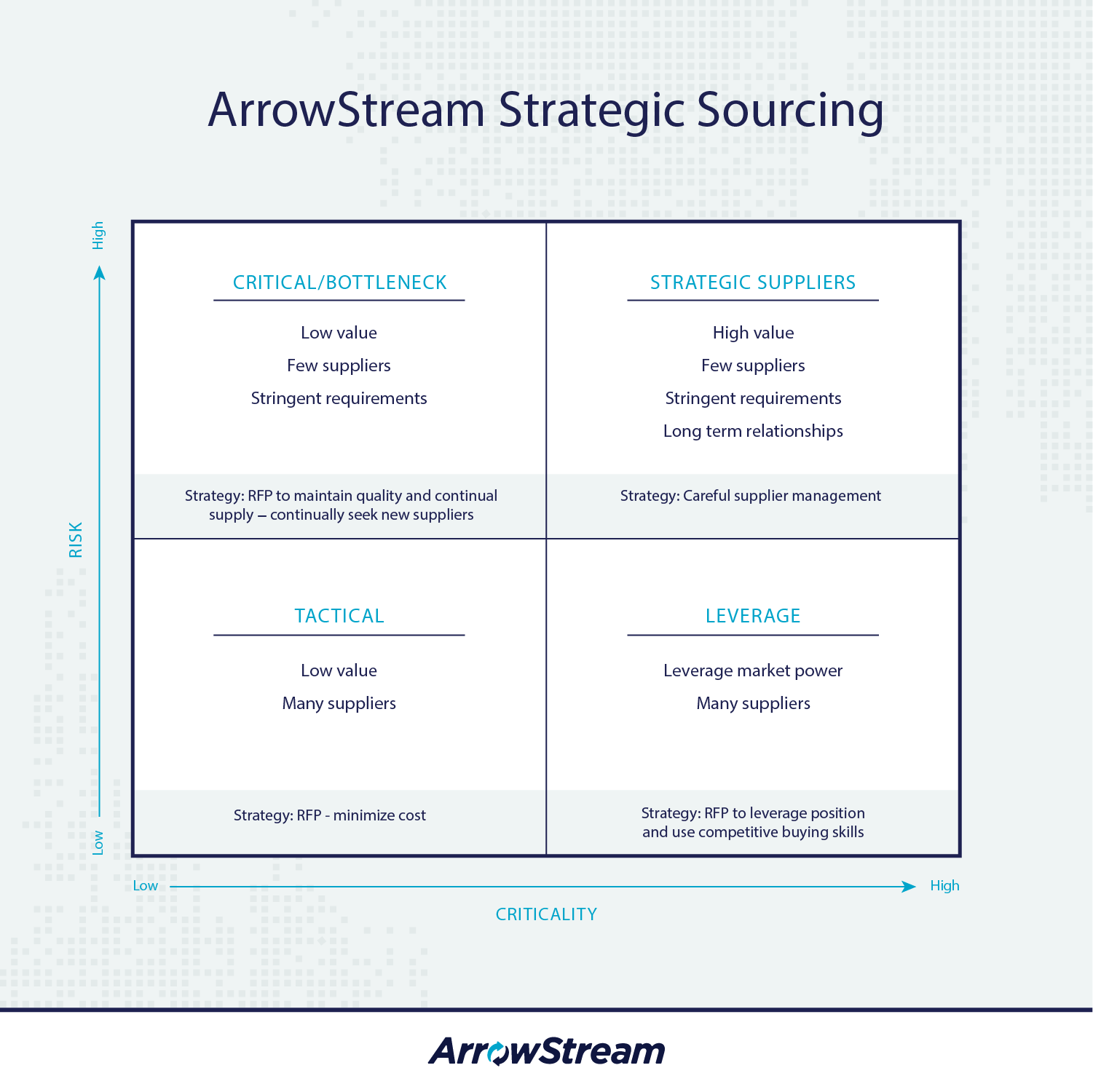We frequently hear chain restaurant operators tell us that they don’t run sourcing events, requests for information (RFIs) or requests for proposals (RFPs), when in fact they do. Oftentimes, what they really mean is that they don’t have a formal process or strategy in place that they call “sourcing.” And, that’s okay. Whatever form your company’s sourcing event, RFI or RFP takes, it’s just important that you, as an operator, do it.
Whether you’re part of a supply chain procurement, culinary or quality assurance team, the following is designed to help operators start small, so they can more easily reach their business objectives and build a structured process and strategy that works for their brand(s).
What is sourcing and why it matters
Foodservice sourcing is a strategic process that secures the right product at the best price and quality. This process includes sending inquiries, running events, RFIs or RFPs.
Depending on your role, the circumstance or goal, there are several reasons why operators would want to source.
For instance, an operator might want to:
- Research qualified suppliers. You may not know which suppliers may be the right fit or who can meet your product or capacity specifications. Sending inquiries ahead of inviting them to your sourcing event can reduce research time and quickly find qualified partners to invite to participate in your event.
- Look for a new product. Limited time offers (LTOs), new menu items or quality or operational issues with an existing product or supplier could mean you need to source for a new product and potentially a new vendor.
- Validate that a current supplier is the best fit. Relationships matter, and customers should trust their suppliers. However, businesses change, and it’s important to verify that your partners are still the best for your organization. This could be from a price, quality or service-level standpoint.
- Test the market to ensure a fair price. Just like businesses change, so do the markets. Commodity markets can be volatile and drastically affect prices. If you’ve been using the same supplier for the last few years, sourcing can help to negotiate a new price with your existing supplier, or you might decide to change suppliers.
- Ensure a back-up supplier. Whether a product is affected by a quality issue, weather phenomenon or another market disruption, having a second supplier to call on will help to ensure you’re prepared for uninterrupted service and quality for your customers.
How to start & organize a sourcing strategy
Using a modified version of a Kraljic Matrix, below is a visual tool to guide customers through starting a sourcing process and to engage them on thinking holistically about foodservice supply chain. The matrix provides a way to categorize products in your supply chain by level of risk and criticality to your business and determine the right strategy.

Customers who are new to sourcing are encouraged to begin with products they believe would fall in the low risk, low criticality box. Every operator will be different, but typical examples of low risk, low criticality items might be non-center-of-the-plate or non-food items, such as straws, garbage can liners or lettuce for a burger. For items in this box, operators might choose to run a sourcing event with a strategy to minimize their costs.
Take foodservice sourcing to the next level
Once operators are comfortable and have run a sourcing event on a low risk, low criticality item, they may want to begin advancing their strategy. This could include running events on items that fall within other boxes on the matrix.
For example, items with low risk, but high criticality may require you to leverage commodity market intelligence to negotiate the right price. Or, items with high risk, but low criticality may require you to locate new suppliers. These may sound like daunting tasks, but ArrowStream customers can effortlessly access daily market data that includes guidance, as well as search our database of over 8,000 foodservice suppliers to find a partner that fits their needs.
In either case, consider ArrowStream and our dedicated team to act as your strategic partner for supporting your supply chain objectives.
About ArrowStream’s Strategic Sourcing
ArrowStream’s Strategic Sourcing solution can help operators at any stage in their sourcing operation. Our end-to-end process focuses operators on high-value sourcing opportunities while minimizing the administrative work needed to run sourcing events.
Restaurant operators across the U.S. use Strategic Sourcing to find and evaluate suppliers; understand market pricing and intelligence data; and execute sourcing events, analyze bids and award business. Talk to one of our supply chain experts about your sourcing goals.

About Bill Becker
Bill Becker is the Vice President of Solution Consulting at ArrowStream. He leads customer engagement initiatives for ArrowStream, from pre-sales solution alignment to ongoing relationship management. Bill has spent over 20 years defining, designing and delivering technology-enabled supply chain solutions, with 15 of those years dedicated to the foodservice space.
